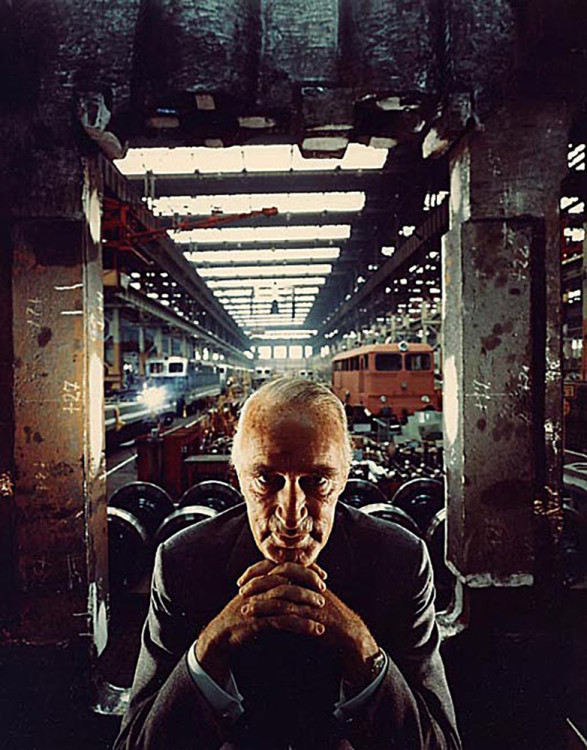The image below was taken by Arnold Newman, of Alfried Krupp in 1963. This photograph is one of Newman’s well known images due to hidden message and ideas that can be taken from this environmental portrait.

I have annotated this photograph in order to show how Newman has used leading lines, to move viewers eyes around the frame. As well as the use of the rule of thirds within this image.
Emotional Response
When I first looked at this image my eyes where immediately drawn to the mysterious man located in the center of the frame. He is an ‘old white man’ which can be seen through his grey hair and wrinkles on his skin. He is giving direct eye contact with the camera and has his head looking slightly down whilst doing this, creating a sinister and mysterious look. It makes us question what he is doing and why. His hands are joined together and place underneath his chin, resting on the hands. Due to this it also adds to the idea that the subject is up to no good. Krupp is found in a suit, showing his high status during the time. He is found sat at a working train station which seems to run down. This makes us question why Krupp is at the train station
Technical Response
The image is presented in color which allows rust/dirt in the station to be more visible. Moreover, it almost makes the picture come to life and allow us to create more ideas about the man in our mind. The background is busy, which informs us that it is a busy train station. The use of leading lines is presented by the ceiling lights. It is used to help direct the viewers eyes around the frame of the photograph, taking in all the details helping us to form an opinion and concept about the image. The man seems to be framed by the walls, which shows segregation between Krupp and what is happening behind him. It also reminds us the status that he is and presents the idea that he is the reason for why what is happening behind him is happening. The clear formal elements which are presented through this image is line, through the trains and ceiling/building structure. Texture can be seen through the rust and different objects which are found within the train station. The depth of field found in this image is large as well as the aperture is high, as nothing seems to be completely out of focus in the image. However, there is a sharper focus on Krupp, which suggests his importance to the setting and situation. The lighting found within the station is quite dark and the image is under exposed which shows how run down and bad the environment of the station was. However, Krupp is lit up also illuminating his importance compared to the station. The image seems to have used a quick shatter speed as no intended blur can be found within the image. In addition, a little noise can be found due to the lighting suggesting that the ISO is likely to be slightly be high but not too high.

Contextual Response
Newman wanted to capture Krupp as a part of his environmental series in 1963. Krupp was an industrialist. However, Krupp was found to be transporting weapons and materials during the second world war. In contrast, Newman was Jewish and did not agree with the same viewpoints as Krupp. Newman still wanted to capture Krupp and managed to persuade him through his portfolios. When capturing the images of Krupp, Newman attempted to portray Krupp as an evil person. This can clearly be seen through the image above.
Conceptual Response
The intended message trying to be presented in this photograph is that there is a man located in this run down train station, who can potentially be the owner of the company. Due to his facial expressions and positioning it makes it seem that he is up to no good and is planning something evil. Many more interpretations can be made about this image, however I believe that this is the most prominent.
